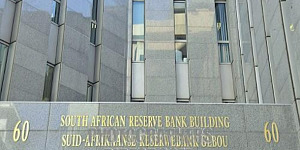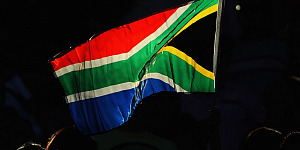South Africa's central bank lowered its key repurchase rate by 25 basis points to 6.50 percent, as expected by some analysts, citing an improved outlook on inflation and economic growth but underscored that "future policy decisions will be highly data-dependent and sensitive to the assessment of the balance of risks to the outlook."
It is the second rate cut by the South African Reserve Bank (SARB) since July 2017, with the move supported by four members of its monetary policy committee while the other three members wanted to retain the rate.
In an update to its quarterly forecast, SARB now projects one increase of its repo rate of 25 basis points by the end of 2019, down from three increases previously forecast, with two further rate hikes forecast by the end of 2020.
However, SARB Governor Lesetja Kganyago repeated that this implied rate path is only a "broad policy guide" that can change in either direction in response to new developments and the MPC "does not mechanically respond to changes in the path."
SARB's rate cut comes against the backdrop of falling inflation, an appreciating rand and an improved growth outlook.
South Africa's headline inflation rate fell to 4.0 percent in February, the lowest since March 2015, and SARB's forecast also showed moderate improvement despite the planned increase in Value-Added-Tax (VAT) on April 1 to 15 percent from 14 percent.
"Although the bottom of the inflation cycle has likely been reached, the trajectory of headline inflation is forecast to remain within the target range, with core inflation expected to remain below 5% for most of the forecast period," Kganyago said.
The VAT hike is expected to add 0.6 percentage points to the upward trajectory of headline inflation for four quarters but the improved exchange rate has softened the impact, with inflation seen averaging 4.9 percent this year, unchanged from the previous forecast, and then 5.2 percent in 2019, down from 5.4 percent and 5.1 percent in 2020.
And while inflation expectations have fallen, SARB said it would prefer to see them closer to the midpoint of its target range of 3-6 percent. Average inflation expectations in the first quarter eased to 5.2 percent for 2018 from 5.7 percent, and 2019 expectations to 5.3 percent from 5.9 percent.
"Although the growth outlook has improved, the outlook remains relatively constrained," Kganyago said, with little pressure on inflation from demand, despite higher consumption.
SARB raised its 2018 growth forecast to 1.7 percent from a previous 1.4 percent but lower the 2019 outlook to 1.5 percent from 1.6 percent. For 2020 it forecast growth of 2.0 percent.
In the fourth quarter of 2017 the economy grew by a higher-than-expectred annual rate of 1.5 percent, with leading business indicators continuing their upward trend in January, supported by higher business and consumer confidence.
South Africa's rand has been firming since mid-November, supported by political developments. weakness in the U.S. dollar, and then by Moody's decision last week to raise its outlook to stable from negative, reducing the risk of a significant sell-off out government bonds.
The rand was trading at 11.79 to the U.S. dollar today, up 4.9 percent this year and up 22.7 percent since Nov. 13 last year.






































